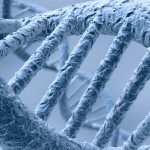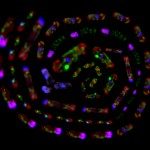Link to Pubmed [PMID] – 18812401
Nucleic Acids Res. 2008 Oct;36(18):5970-82
Minisatellites are DNA tandem repeats that are found in all sequenced genomes. In the yeast Saccharomyces cerevisiae, they are frequently encountered in genes encoding cell wall proteins. Minisatellites present in the completely sequenced genome of the pathogenic yeast Candida glabrata were similarly analyzed, and two new types of minisatellites were discovered: minisatellites that are composed of two different intermingled repeats (called compound minisatellites), and minisatellites containing unusually long repeated motifs (126-429 bp). These long repeat minisatellites may reach unusual length for such elements (up to 10 kb). Due to these peculiar properties, they have been named ‘megasatellites’. They are found essentially in genes involved in cell-cell adhesion, and could therefore be involved in the ability of this opportunistic pathogen to colonize the human host. In addition to megasatellites, found in large paralogous gene families, there are 93 minisatellites with simple shorter motifs, comparable to those found in S. cerevisiae. Most of the time, these minisatellites are not conserved between C. glabrata and S. cerevisiae, although their host genes are well conserved, raising the question of an active mechanism creating minisatellites de novo in hemiascomycetes.






